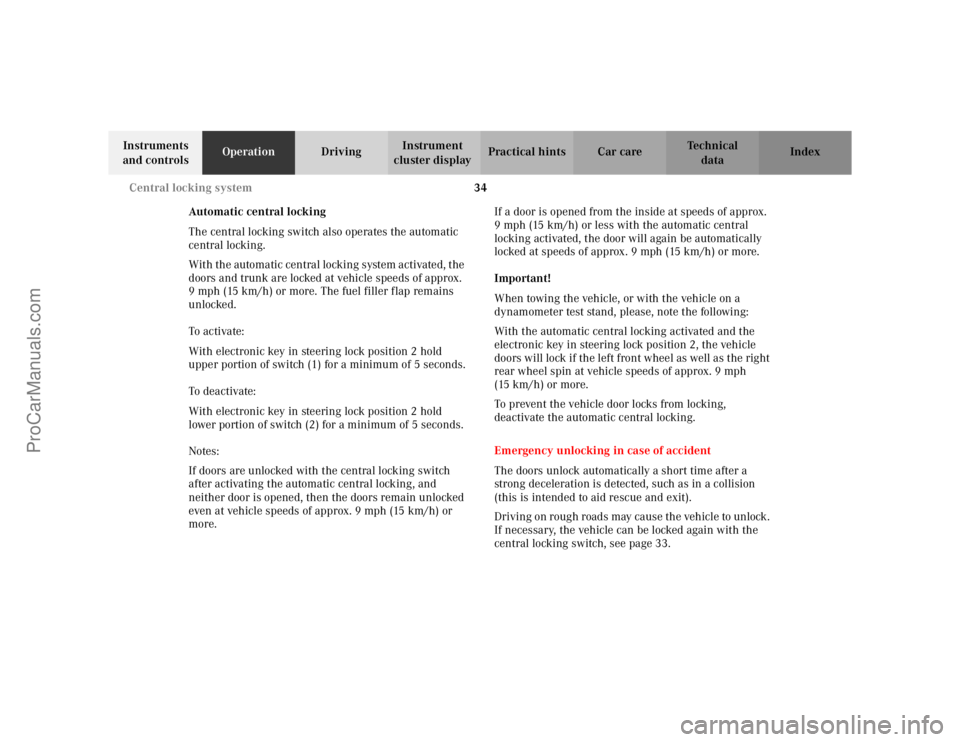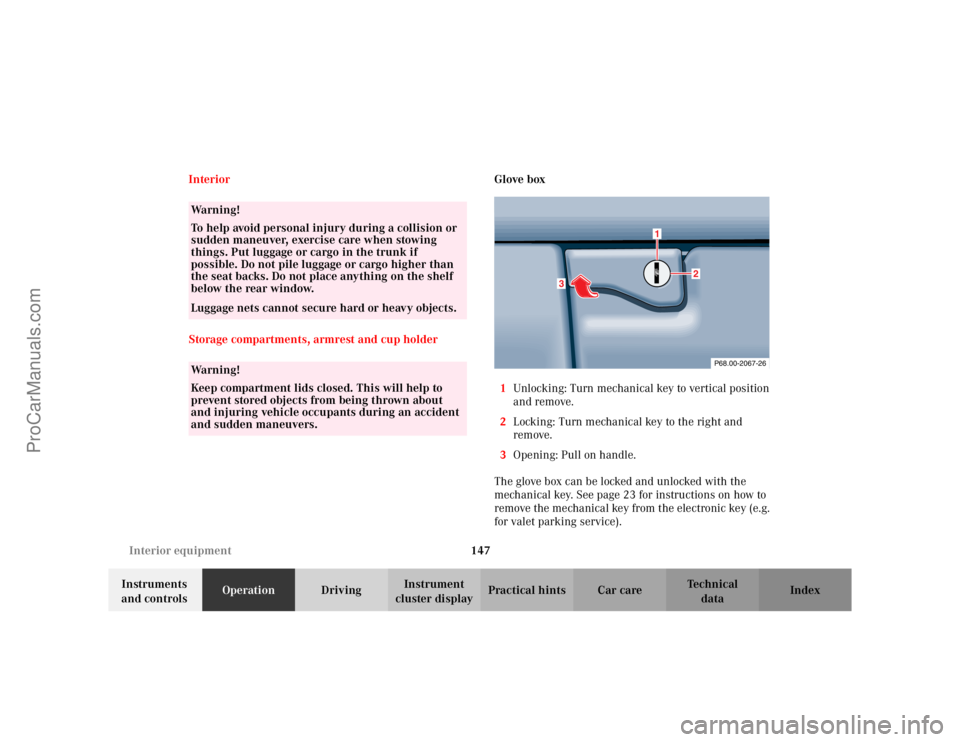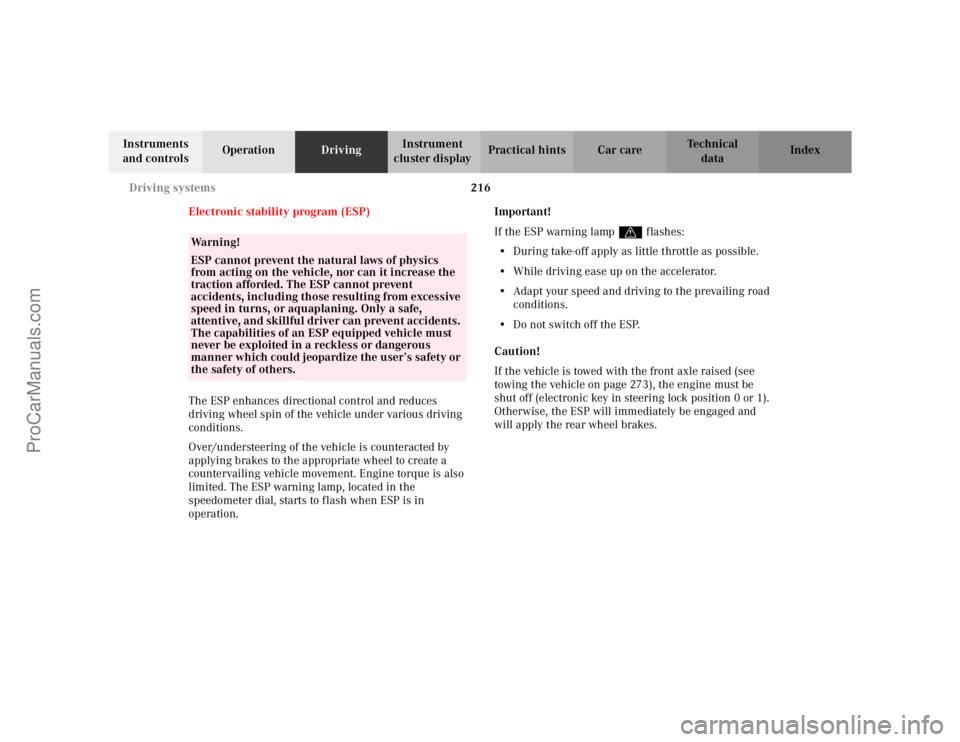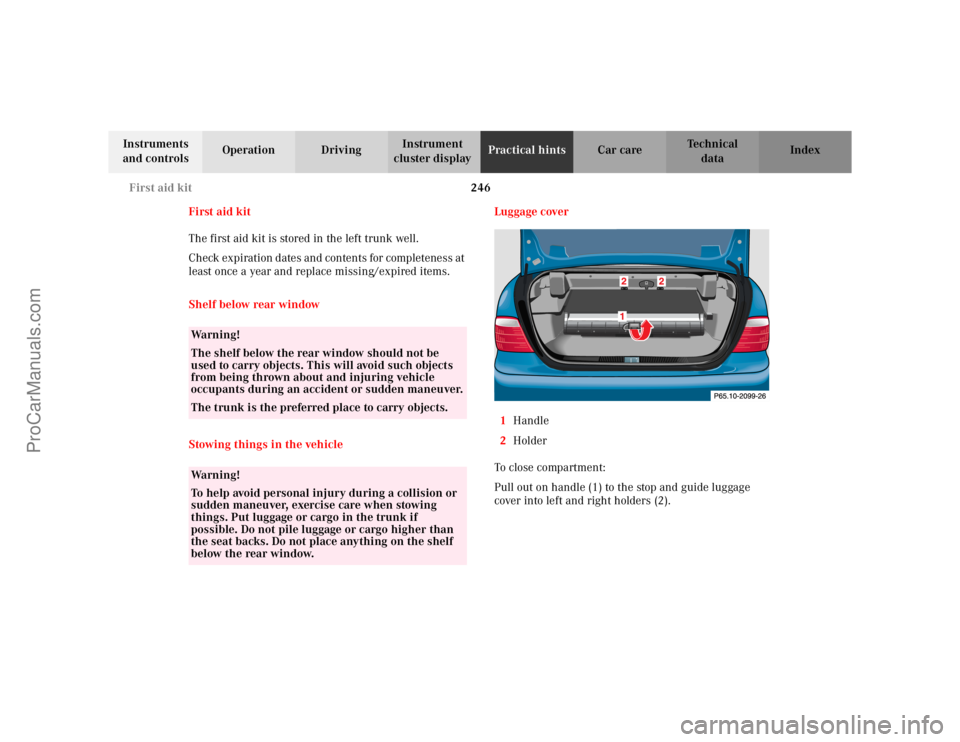2002 MERCEDES-BENZ CLK-CLASS towing
[x] Cancel search: towingPage 7 of 341

4 ContentsTELE AID .....................................243
Practical hintsFirst aid kit .....................................246
Shelf below rear window ..............246
Stowing things in the vehicle ......246
Luggage cover .................................246
Fuses ................................................248
Hood .................................................250
Checking engine oil level .............252
Automatic transmission fluid
level .............................................253
Coolant level ...................................253
Adding coolant ...........................254
Windshield washer / headlamp
cleaning system .........................255
Windshield and headlamp washer
fluid mixing ratio .......................255
Spare wheel, vehicle tools, storage
compartment .............................256
Vehicle jack .....................................257
Wheels .............................................258
Tire replacement ........................258
Rotating wheels ..........................259Spare wheel .................................... 260
Spare wheel bolts .......................... 260
Spare wheel bolts ...................... 260
Spare wheel .................................... 260
Changing wheels ........................... 263
Tire inflation pressure ................. 268
Battery ............................................. 270
Jump starting ..................................271
Towing the vehicle ........................ 273
Exterior lamps ............................... 277
Headlamp assembly .................. 278
Taillamp assemblies .................. 280
Adjusting headlamp aim .............. 282
Changing batteries in the electronic
key .............................................. 285
Synchronizing remote
control ........................................ 287
Raising soft top manually ............ 288
Antenna .......................................... 295
Manual release for fuel filler
flap .............................................. 296
Replacing wiper blade insert ...... 296
Vehicle careCleaning and care of the
vehicle ........................................300
Power washer .............................. 301
Paintwork, painted body
components ................................. 301
Engine cleaning ..........................302
Tar stains .....................................302
Vehicle washing .........................302
Ornamental moldings ................302
Headlamps, taillamps, turn signal
lenses ...........................................303
Window cleaning .......................303
Plastic and rubber parts ............303
Wiper blade .................................303
Light alloy wheels ......................303
Instrument cluster .....................304
Steering wheel and gear selector
lever ..............................................304
Cup holder ...................................304
Seat belts .....................................304
Headliner .....................................304
Upholstery ...................................305
ProCarManuals.com
Page 37 of 341

34 Central locking system
Te ch n i c a l
data Instruments
and controlsOperationDrivingInstrument
cluster displayPractical hints Car care Index
Automatic central locking
The central locking switch also operates the automatic
central locking.
With the automatic central locking system activated, the
doors and trunk are locked at vehicle speeds of approx.
9 mph (15 km/h) or more. The fuel filler flap remains
unlocked.
To a c ti va te :
With electronic key in steering lock position 2 hold
upper portion of switch (1) for a minimum of 5 seconds.
To d ea ct iva te:
With electronic key in steering lock position 2 hold
lower portion of switch (2) for a minimum of 5 seconds.
Notes:
If doors are unlocked with the central locking switch
after activating the automatic central locking, and
neither door is opened, then the doors remain unlocked
even at vehicle speeds of approx. 9 mph (15 km/h) or
more.If a door is opened from the inside at speeds of approx.
9 mph (15 km/h) or less with the automatic central
locking activated, the door will again be automatically
locked at speeds of approx. 9 mph (15 km/h) or more.
Important!
When towing the vehicle, or with the vehicle on a
dynamometer test stand, please, note the following:
With the automatic central locking activated and the
electronic key in steering lock position 2, the vehicle
doors will lock if the left front wheel as well as the right
rear wheel spin at vehicle speeds of approx. 9 mph
(15 km/h) or more.
To prevent the vehicle door locks from locking,
deactivate the automatic central locking.
Emergency unlocking in case of accident
The doors unlock automatically a short time after a
strong deceleration is detected, such as in a collision
(this is intended to aid rescue and exit).
Driving on rough roads may cause the vehicle to unlock.
If necessary, the vehicle can be locked again with the
central locking switch, see page 33.
ProCarManuals.com
Page 150 of 341

147 Interior equipment
Te ch n i c a l
data Instruments
and controlsOperationDrivingInstrument
cluster displayPractical hints Car care Index Interior
Storage compartments, armrest and cup holderGlove box
1Unlocking: Turn mechanical key to vertical position
and remove.
2Locking: Turn mechanical key to the right and
remove.
3Opening: Pull on handle.
The glove box can be locked and unlocked with the
mechanical key. See page 23 for instructions on how to
remove the mechanical key from the electronic key (e.g.
for valet parking service).
Wa r n i n g !
To help avoid personal injury during a collision or
sudden maneuver, exercise care when stowing
things. Put luggage or cargo in the trunk if
possible. Do not pile luggage or cargo higher than
the seat backs. Do not place anything on the shelf
below the rear window.Luggage nets cannot secure hard or heavy objects.Wa r n i n g !
Keep compartment lids closed. This will help to
prevent stored objects from being thrown about
and injuring vehicle occupants during an accident
and sudden maneuvers.
P68.00-2067-26
3
1
2
ProCarManuals.com
Page 185 of 341

182 Tele Aid
Te ch n i c a l
data Instruments
and controlsOperationDrivingInstrument
cluster displayPractical hints Car care Index
Roadside Assistance button •
Located below the center armrest cover is the Roadside
Assistance button•. Pressing and holding the
button (for longer than 2 seconds) will initiate a call to a
Mercedes-Benz Roadside Assistance dispatcher. The
button will flash while the call is in progress. The
message “ROADSIDE ASSISTANCE – CONNECTING
CALL” will appear in the multifunction display. When
the connection is established, the message “ROADSIDE
ASSISTANCE – CALL CONNECTED” appears in the
multifunction display. The Tele Aid system will transmit
data generating the vehicle identification number,
model, color and location (subject to availability of
cellular and GPS signals).
A voice connection between the Roadside Assistance
dispatcher and the occupants of the vehicle will be
established. When a voice connection is established the
audio system mutes and the message “TELE AID –
ROADSIDE ASSISTANCE CALL ACTIVE” appears in the
multifunction display. The nature of the need for
assistance can then be described. The Mercedes-Benz
Roadside assistance dispatcher will either dispatch a
qualified Mercedes-Benz technician or arrange to tow
your vehicle to the nearest Mercedes-Benz Center. For services such as labor and/or towing charges may apply.
Refer to the Roadside Assistance manual for more
information.
These programs are only available in the USA:
•Sign and Drive services: Services such as jump start,
a few gallons of fuel or the replacement of a flat tire
with the vehicle spare tire are obtainable,
•Remote Vehicle Diagnostics: This function permits
the Mercedes-Benz Roadside Assistance dispatcher
to download malfunction codes and actual vehicle
data.
Notes:
The indicator lamp in the Roadside Assistance
button• remains illuminated in red for approx.
10 seconds during the system self-check after turning
electronic key in starter switch to position 2 (together
with the SOS button and the Information button¡).
See system self-check on page 179 when the indicator
lamp does not light up in red or stays on longer than
approximately 10 seconds.
ProCarManuals.com
Page 219 of 341

216 Driving systems
Te ch n i c a l
data Instruments
and controlsOperationDrivingInstrument
cluster displayPractical hints Car care Index
Electronic stability program (ESP)
The ESP enhances directional control and reduces
driving wheel spin of the vehicle under various driving
conditions.
Over/understeering of the vehicle is counteracted by
applying brakes to the appropriate wheel to create a
countervailing vehicle movement. Engine torque is also
limited. The ESP warning lamp, located in the
speedometer dial, starts to flash when ESP is in
operation.Important!
If the ESP warning lampv flashes:
•During take-off apply as little throttle as possible.
•While driving ease up on the accelerator.
•Adapt your speed and driving to the prevailing road
conditions.
•Do not switch off the ESP.
Caution!
If the vehicle is towed with the front axle raised (see
towing the vehicle on page 273), the engine must be
shut off (electronic key in steering lock position 0 or 1).
Otherwise, the ESP will immediately be engaged and
will apply the rear wheel brakes.
Wa r n i n g !
ESP cannot prevent the natural laws of physics
from acting on the vehicle, nor can it increase the
traction afforded. The ESP cannot prevent
accidents, including those resulting from excessive
speed in turns, or aquaplaning. Only a safe,
attentive, and skillful driver can prevent accidents.
The capabilities of an ESP equipped vehicle must
never be exploited in a reckless or dangerous
manner which could jeopardize the user’s safety or
the safety of others.
ProCarManuals.com
Page 248 of 341

245
Te ch n i c a l
data Instruments
and controlsOperation DrivingInstrument
cluster displayPractical hintsCar care Index
Practical hintsFirst aid kit .....................................246
Shelf below rear window ..............246
Stowing things in the vehicle ......246
Luggage cover .................................246
Fuses ................................................248
Hood .................................................250
Checking engine oil level .............252
Automatic transmission fluid
level .............................................253
Coolant level ...................................253
Adding coolant ...........................254
Windshield washer / headlamp
cleaning system .........................255
Windshield and headlamp washer
fluid mixing ratio .......................255Spare wheel, vehicle tools, storage
compartment ............................. 256
Vehicle jack .................................... 257
Wheels ............................................ 258
Tire replacement ....................... 258
Rotating wheels ......................... 259
Spare wheel .................................... 260
Spare wheel bolts .......................... 260
Spare wheel bolts ...................... 260
Spare wheel .................................... 260
Changing wheels ........................... 263
Tire inflation pressure ................. 268
Battery ............................................. 270
Jump starting ..................................271
Towing the vehicle ........................ 273
Exterior lamps ............................... 277
Headlamp assembly .................. 278
Taillamp assemblies .................. 280Adjusting headlamp aim ...............282
Changing batteries in the electronic
key ...............................................285
Synchronizing remote
control .........................................287
Raising soft top manually .............288
Antenna ...........................................295
Manual release for fuel filler
flap ..............................................296
Replacing wiper blade insert .......296
ProCarManuals.com
Page 249 of 341

246 First aid kit
Te ch n i c a l
data Instruments
and controlsOperation DrivingInstrument
cluster displayPractical hintsCar care Index
First aid kit
The first aid kit is stored in the left trunk well.
Check expiration dates and contents for completeness at
least once a year and replace missing/expired items.
Shelf below rear window
Stowing things in the vehicleLuggage cover
1Handle
2Holder
To c l o s e c o mp a r t m e n t :
Pull out on handle (1) to the stop and guide luggage
cover into left and right holders (2).
Wa r n i n g !
The shelf below the rear window should not be
used to carry objects. This will avoid such objects
from being thrown about and injuring vehicle
occupants during an accident or sudden maneuver.
The trunk is the preferred place to carry objects.Wa r n i n g !
To help avoid personal injury during a collision or
sudden maneuver, exercise care when stowing
things. Put luggage or cargo in the trunk if
possible. Do not pile luggage or cargo higher than
the seat backs. Do not place anything on the shelf
below the rear window.
ProCarManuals.com
Page 276 of 341

273 Towing
Te ch n i c a l
data Instruments
and controlsOperation DrivingInstrument
cluster displayPractical hintsCar care Index Important!
5. Start engine of the vehicle with the charged battery
and run at high idle. Make sure the cables are not
on or near pulleys, fans, or other parts that move
when the engine is started. Allow the discharged
battery to charge for a few minutes. Start engine of
the disabled vehicle in the usual manner.
6. After the engine has started, remove jumper cables
by exactly reversing the above installation
sequence, starting with the last connection made
first. When removing each clamp, make sure that it
does not touch any other metal while the other end
is still attached to a battery.
Notes:
If engine does not run after several unsuccessful
starting attempts, have it checked at the nearest
authorized Mercedes-Benz Center.
Excessive unburned fuel generated by repeated failed
starting attempts may damage the catalytic converter.Tow i n g t h e v e h i c l e
Mercedes-Benz recommends that the vehicle be
transported with all wheels off the ground using flatbed
or appropriate wheel lift/ dolly equipment. This method
is preferable to other types of towing.
Caution!
Use flatbed or wheel lift/ dolly equipment with key in
steering lock turned to position 0.
Do not tow with sling- type equipment. Towing with
sling- type equipment over bumpy roads will damage
radiator and supports.
To prevent damage during transport, do not tie down
vehicle by its chassis or suspension parts.
Switch off the tow-away alarm (see page 40) as well as
the ESP (see page 218).
When circumstances do not permit the recommended
towing methods, the vehicle may be towed with all
wheels on the ground or front wheels raised only so far
as necessary to have the vehicle moved to a safe location
where the recommended towing methods can be
employed.
ProCarManuals.com